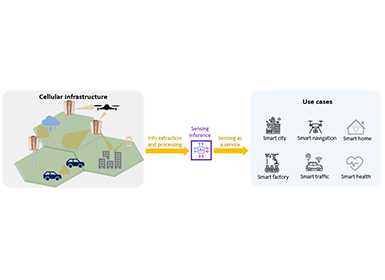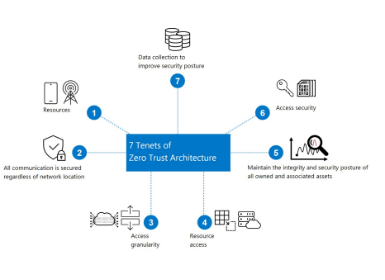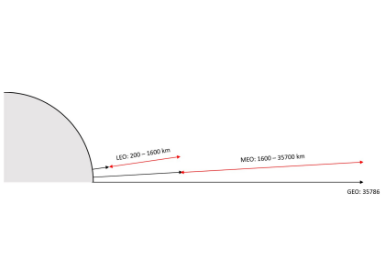Communications
Looking back at 5G to build future 6G in ITU-R
Land and structural drawings required to construct a building
What is the most critical element when you construct a building? Both land and a structural drawing would be the most important. If we are comparing mobile communications to buildings, spectrum is the land, and technical standards are the structural drawings.
The ITU-R1 is the initial place to build a new generation of mobile communications such as 5G and 6G by describing a global vision. In case of 5G, ITU-R developed the 5G Vision in 2015. To realize the 5G Vision, ITU-R worked hard to find the right land for 5G at WRC-19. And this 5G Vision facilitated the mobile industry in developing 5G technical specifications. ITU-R completed the structural drawing of 5G in 2020 by approving the technical specifications developed by external standard development organizations such as 3GPP.
In this article, we would like to look back on our past 10 years’ experience of what and how Samsung’s global spectrum team, including ourselves, have been engaged within ITU-R/WRC in activities of spectrum and technical standards as important elements to construct a building called 5G (IMT-2020 ). Also, towards the end, we would like to briefly sketch 6G on undeveloped land. Samsung’s global spectrum team consists of experts in Korea, Brazil, China, India, UK/Europe, and the USA.
Spectrum for 5G
5G spectrum is mainly divided into two parts, namely, sub 6 GHz such as the 3.5 GHz band and high frequencies called mmWave bands. Existing sub 6 GHz bands for 5G were identified through previous WRCs. However, mmWave bands have never been discussed for mobile communication usage in ITU-R before 2012.
The time now goes back to 2012.
In 2012, Samsung Research was accelerating the development of 5G technologies. In addition, at an ITU-R meeting in July 2012, we submitted a proposal to use mmWave bands for mobile communications. As expected, most meeting attendees were negative about the mobile usage of these bands. However, by continuously showing the feasibility of mmWave mobile technologies, interest has begun to emerge within the ITU-R members. Finally, a consensus was formed in the direction of creating opportunities to identify high frequency bands for IMT at WRC-19.
For the IMT identification at WRC-19, the first step was to set up an agenda item of WRC-19 at the previous WRC, i.e., WRC-15, which needed unanimous supports from major administrations. Prior to WRC-15, Samsung’s global spectrum team made huge efforts to persuade major administrations. Thanks to these efforts, most administrations agreed to set it up at WRC-15. The next step was the selection of candidate bands. After some twists and turns, bands that are not the best, but the second best, were chosen as candidate bands for a WRC-19 agenda item at WRC-15, which was Samsung’s first achievement to lead global mobile spectrum discussion and set up an agenda item of WRC. This achievement could be regarded that Samsung became the 5G industry frontier.
From WRC-15 to WRC-19, an invisible battle to secure frequency bands continued between opposing camps. It was a race between an incumbent camp who tried to prevent or restrict the use of the bands, already allocated for other services, by IMT and an entering camp who wanted to use those bands for IMT. There are lots of ‘behind the scenes’ stories to talk about, but in any case, we were pleased to make great achievements in identifying mmWave bands including the 26 GHz band for IMT. At long last, 5G got a new land in high frequency band.

Some of the Samsung Spectrum Team at the 2019 World Radio Conference
Technical standardization for 5G
The land for 5G has been secured. Now, let's look back on how structural drawings were developed to construct a building.
From February 2016 to November 2020, the development of 5G technical standardization was carried out, following the ITU-R 5G standardization process depicted in the figure below.

ITU-R IMT standardization process
Firstly, ITU-R defined technical performance requirements to realize the 5G Vision,2 which provides a global direction and roadmap for the technology, service, frequency, and commercialization. In parallel, the methodology to evaluate candidate technologies was also developed from 2016 to 2017.
In this stage of defining requirements and evaluation methodology, among administrations and individual industry members, a fierce neck-and-neck race took place to reflect their requirements and evaluation methodologies into ITU-R documents. In our case, as a pioneer of mmWave technology, mmWave-related elements had to be included as a mandate in the requirements and evaluation methodology. It was indeed a difficult task for us since some administrations and industry members did not have confidence on 5G mmWave at that time. However, having overcome not only the competition within mobile industries but also the competition against other industries such as satellite and fixed wireless services, through numerous persuasion and technical explanation to administrations and industries, our proposals were finally adopted in those documents.
Outside ITU-R, external standard development organizations such as 3GPP developed 5G technical specifications, referring to the ITU-R 5G requirements. From October 2017 to July 2019, candidate technologies from external organizations including 3GPP were submitted to ITU-R. The submitted technologies were evaluated to determine whether they fulfill the 5G requirements or not. After the thorough evaluation process, the 5G Recommendation was finalized in November 2020, and 3GPP technology is honored to become an international standard in law.
Towards 6G
According to the GSA report, 163 mobile operators in 64 countries launched their 5G services as of April 2021. We are pleased to see that 5G is coming from the drawings to the solid land and becoming a real mansion. Again looking back on our experience of 5G and even 4G development, it would usually take around a 10-year period to fulfill the entire construction work, from the planning to the building itself. Therefore, with the gradual maturity of 5G, it is time to prepare for the new generation towards 2030. That's 6G!
In March 2021, ITU-R started to develop the 6G Vision. The 6G Vision is planned to be completed by June 2023, so by this time, the big picture for 6G around 2030 will be designed. HyoungJin Choi, one of us was named as the chairman of 6G Vision group in ITU-R. It makes us thrilled to lead the development of 6G Vision to prepare a land and a structural drawing for a new building called 6G. It may be also necessary to consider the establishment of an agenda item for 6G spectrum, a broader land that covers low/mid/high and even higher, known as sub-THz, spectrum to construct a skyscraper called 6G, in WRC-23. And we, as the Samsung global spectrum team are on our way towards this new challenge.
Reference
1 The International Telecommunication Union is a specialized agency of the United Nations responsible for all matters related to information and communication technologies. The ITU Radiocommunication sector (ITU-R) is responsible for radiocommunication.
2 Recommendation ITU-R M.2083 “IMT Vision – Framework and overall objectives of the future development of IMT for 2020 and beyond”, September 2015
3 World radiocommunication conferences (WRC) are held every three to four years to review and revise the Radio Regulations, the international treaty governing the use of the radio-frequency spectrum.
4 As defined in Resolution ITU-R 56, the term IMT, International Mobile Telecommunication, is the root name that encompasses all of IMT-2000, IMT-Advanced and IMT-2020 collectively as symmetrically known as 3G, 4G and 5G, respectively.
5 Samsung Newsroom: "Pioneer in 5G Standards, Part 1: Finding the ‘Land of Opportunity’ in 5G Millimeter-Wave,":https://news.samsung.com/global/pioneer-in-5g-standards-part-1-finding-the-land-of-opportunity-in-5g-millimeter-wave
6 Recommendation ITU-R M.2150 : Detailed specifications of the terrestrial radio interfaces of International Mobile Telecommunications-2020 (IMT-2020)
7 Networks, Technologies & Spectrum Snapshot: LTE and 5G Market Statistics, GSA, April 2021
8 https://news.samsung.com/global/samsung-researcher-named-the-chair-of-itu-r-6g-vision-group






